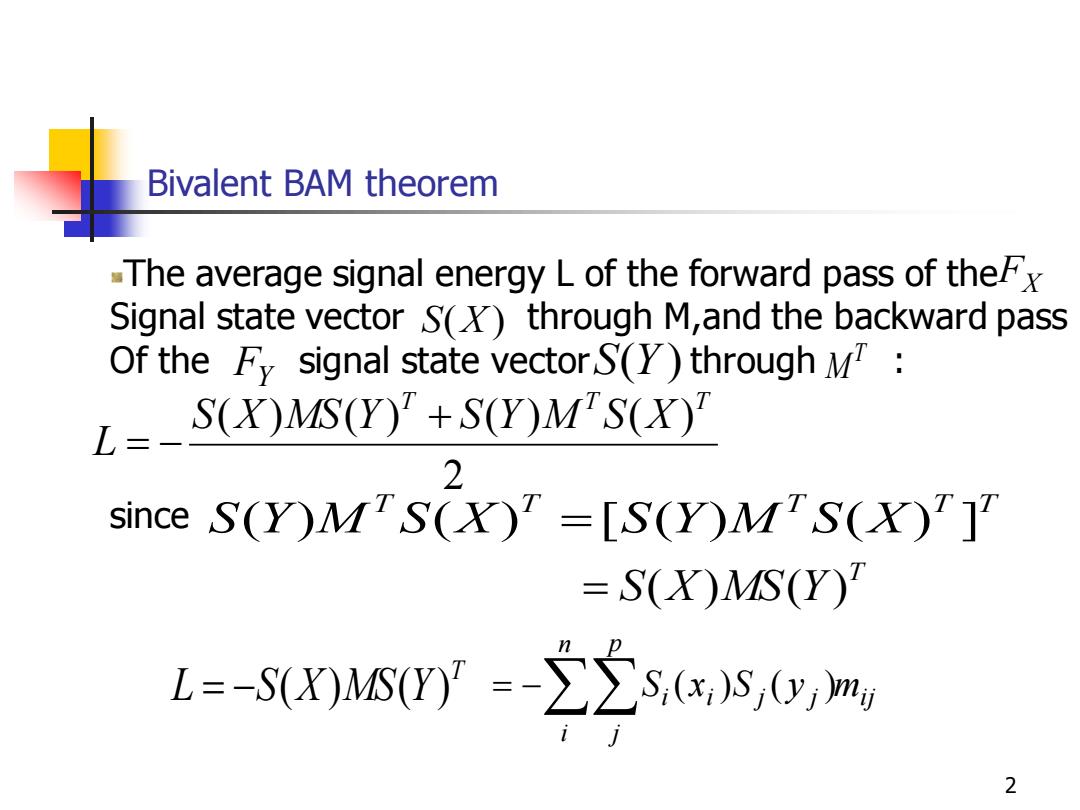
Bivalent BAM theorem -The average signal energy L of the forward pass of theFx Signal state vector S(X)through M,and the backward pass Of the Fy signal state vectorS(Y)through M?: L=一 S(X)MS(Y)+S(Y)M'S(X) 2 since S(M'S(X)=[S(MS(X) =S(X)MS(Y) L=-SX)MSY)y=-∑∑S(x,)S,Oy,m 2
2 Bivalent BAM theorem The average signal energy L of the forward pass of the Signal state vector through M,and the backward pass Of the signal state vector through : FX S(X) T FY S(Y) M 2 ( ) ( ) ( ) ( ) T T T S X MS Y S Y M S X L + = − T T T T T S(Y)M S(X) =[S(Y)M S(X) ] T = S(X)MS(Y) since T L = −S(X)MS(Y) i j n i p j = −Si (xi )S j ( y j )m
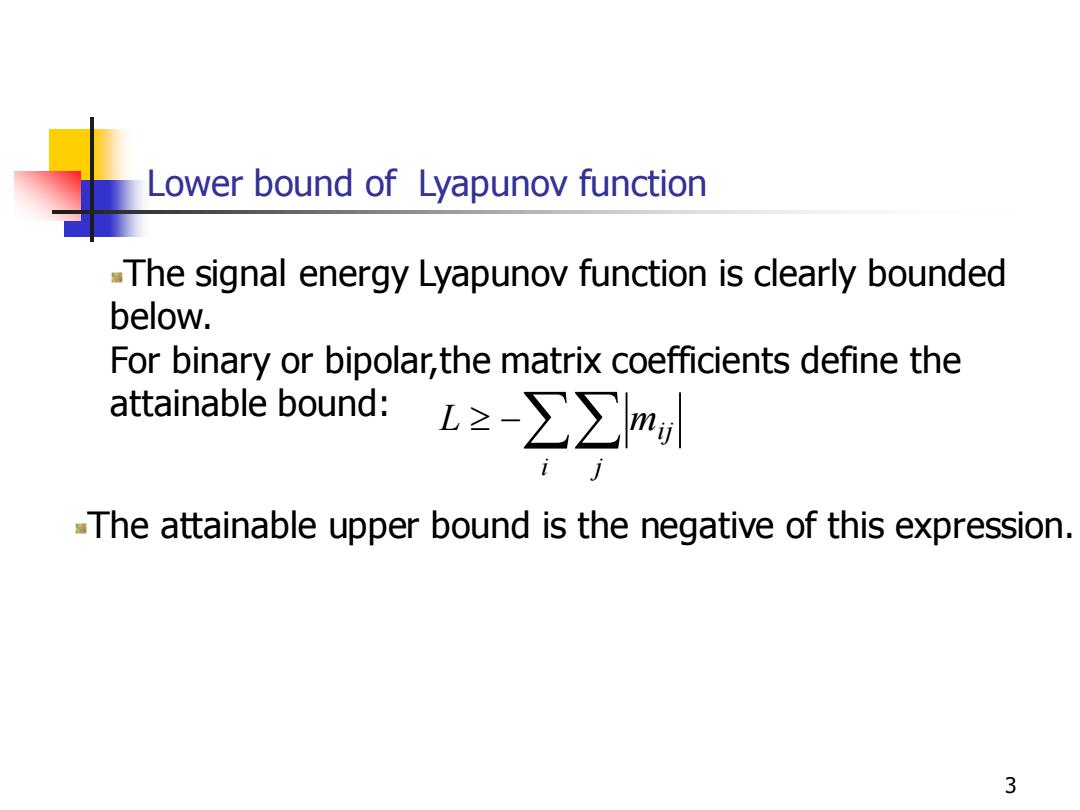
Lower bound of Lyapunov function -The signal energy Lyapunov function is clearly bounded below. For binary or bipolar,the matrix coefficients define the attainable bound:L≥-∑∑m,l i -The attainable upper bound is the negative of this expression. 3
3 Lower bound of Lyapunov function The signal energy Lyapunov function is clearly bounded below. For binary or bipolar,the matrix coefficients define the attainable bound: The attainable upper bound is the negative of this expression. − i j L mij
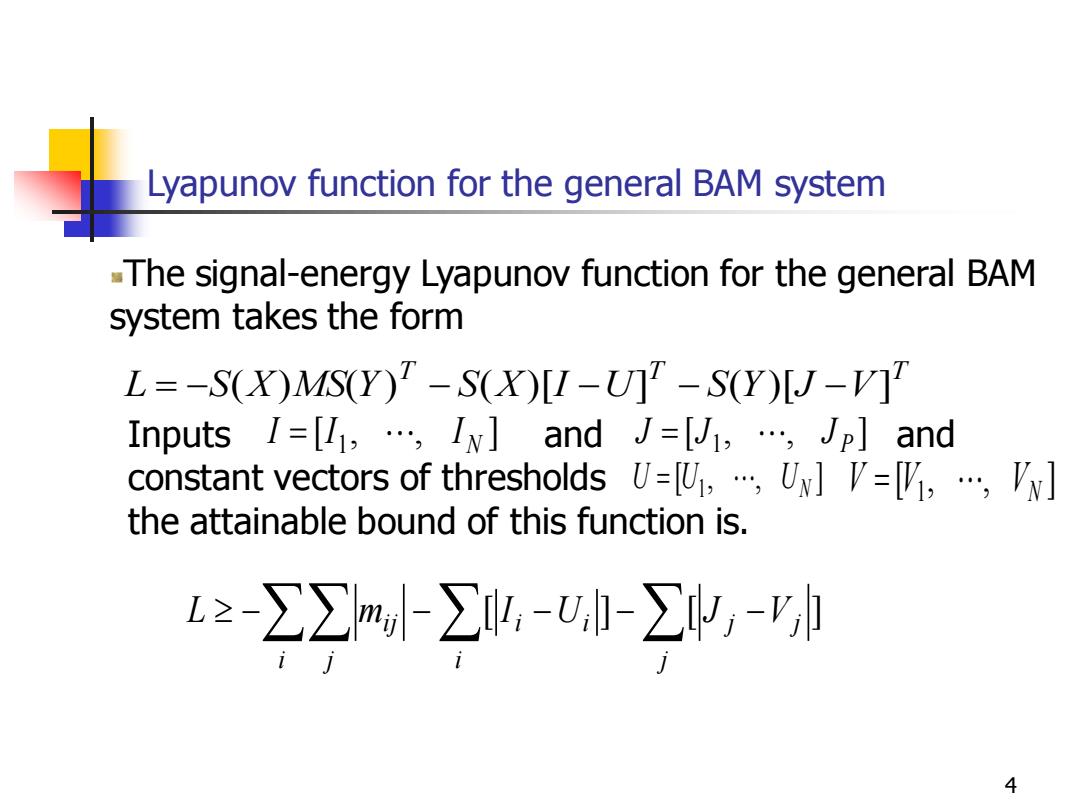
Lyapunov function for the general BAM system -The signal-energy Lyapunov function for the general BAM system takes the form L=-S(X)MS(Y)"-S(X)I-U-S(Y)J- Inputs I=[i,…,Iv]andJ=[Ui,…,Jp]and constant vectors of thresholds U=[U,,Ux]V=[V,,V] the attainable bound of this function is. ≥∑∑m∑-l-∑,-h 4
4 Lyapunov function for the general BAM system The signal-energy Lyapunov function for the general BAM system takes the form Inputs and and constant vectors of thresholds the attainable bound of this function is. T T T L = −S(X)MS(Y) − S(X) [I −U] − S(Y) [J −V] [ , , ] N I I I = 1 [ , , ] P J J J = 1 [ , , ] U U1 UN = [ , , ] V V1 VN = − − − − − j j j i i i i j L mi j [ I U ] [ J V ]
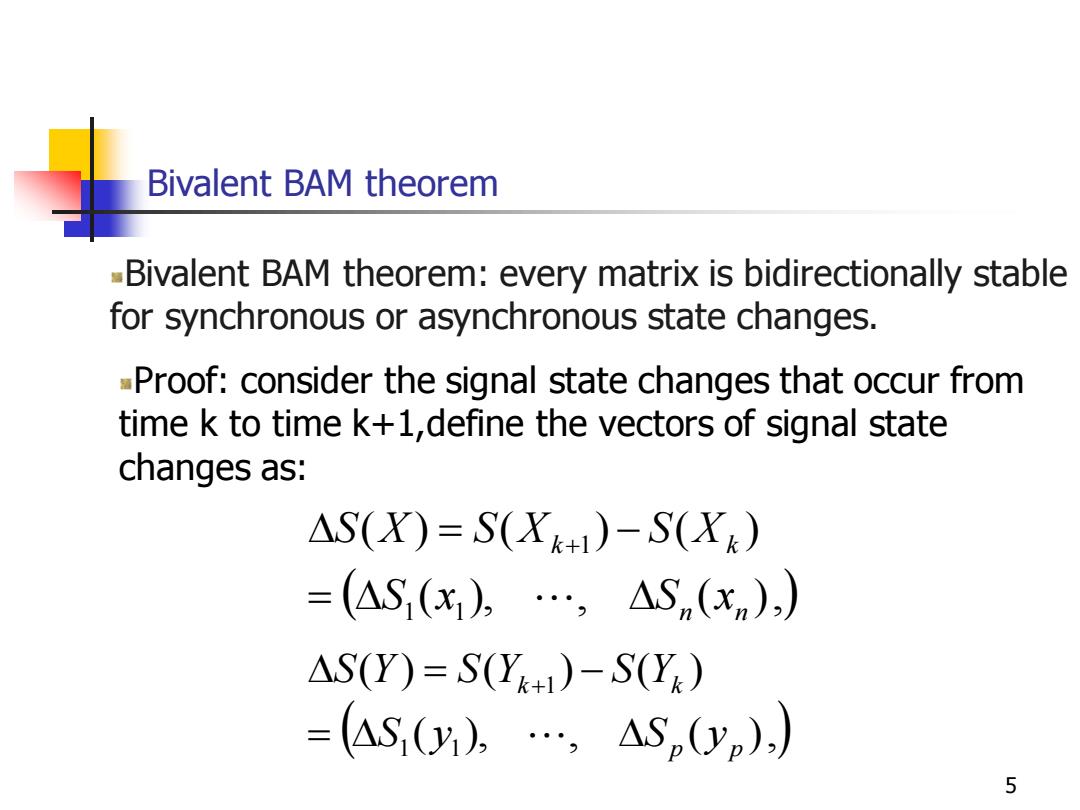
Bivalent BAM theorem -Bivalent BAM theorem:every matrix is bidirectionally stable for synchronous or asynchronous state changes. Proof:consider the signal state changes that occur from time k to time k+1,define the vectors of signal state changes as: △S(X)=S(Xk+1)-S(Xk) =(AS(x)2…,ASn(xn),) AS(Y)=S(Y)-S(Y) =AS(y)2…,S,yp),) 5
5 Bivalent BAM theorem Bivalent BAM theorem: every matrix is bidirectionally stable for synchronous or asynchronous state changes. Proof: consider the signal state changes that occur from time k to time k+1,define the vectors of signal state changes as: ( ( ), , ( ),) ( ) ( ) ( ) 1 1 1 n n k k S x S x S X S X S X = = + − ( ( ), , ( ),) ( ) ( ) ( ) 1 1 1 p p k k S y S y S Y S Y S Y = = + −
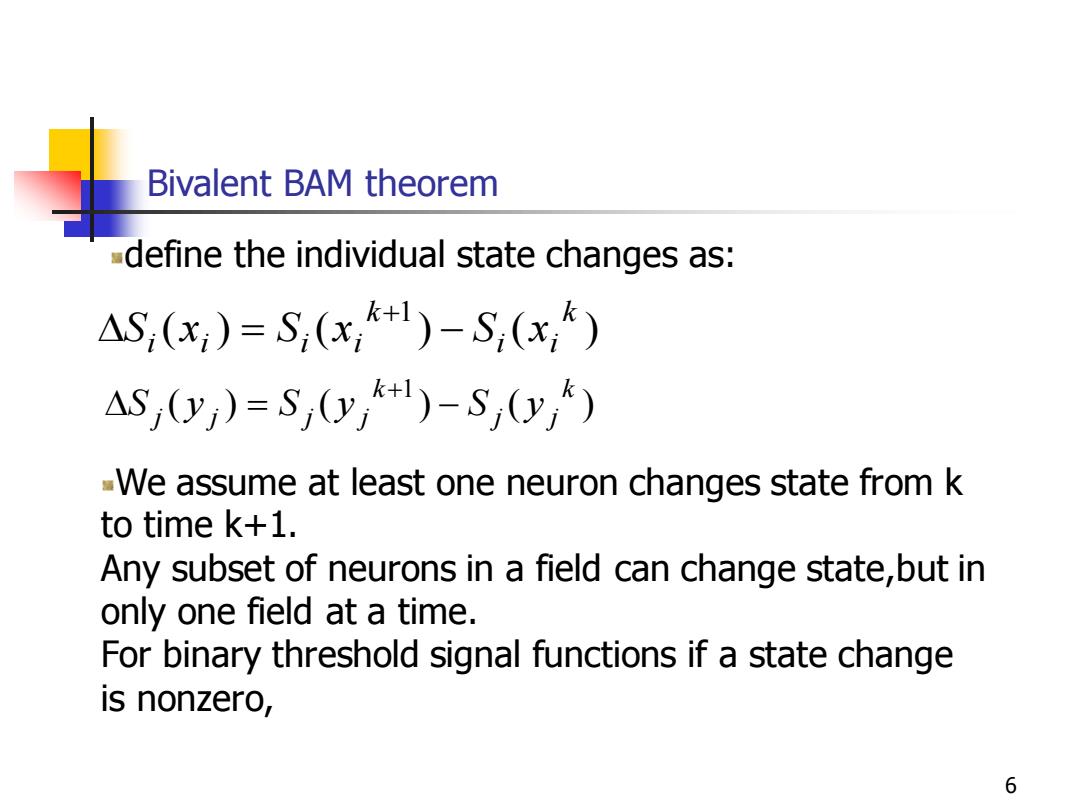
Bivalent BAM theorem -define the individual state changes as: △S,(x)=S,(x,+l)-S,(x;) AS,(y,)=S,y,)-S,(y,) -We assume at least one neuron changes state from k to time k+1. Any subset of neurons in a field can change state,but in only one field at a time. For binary threshold signal functions if a state change is nonzero, 6
6 Bivalent BAM theorem define the individual state changes as: ( ) ( ) ( ) k i i k i i i i S x = S x − S x +1 ( ) ( ) ( ) k j j k j j j j S y = S y − S y +1 We assume at least one neuron changes state from k to time k+1. Any subset of neurons in a field can change state,but in only one field at a time. For binary threshold signal functions if a state change is nonzero